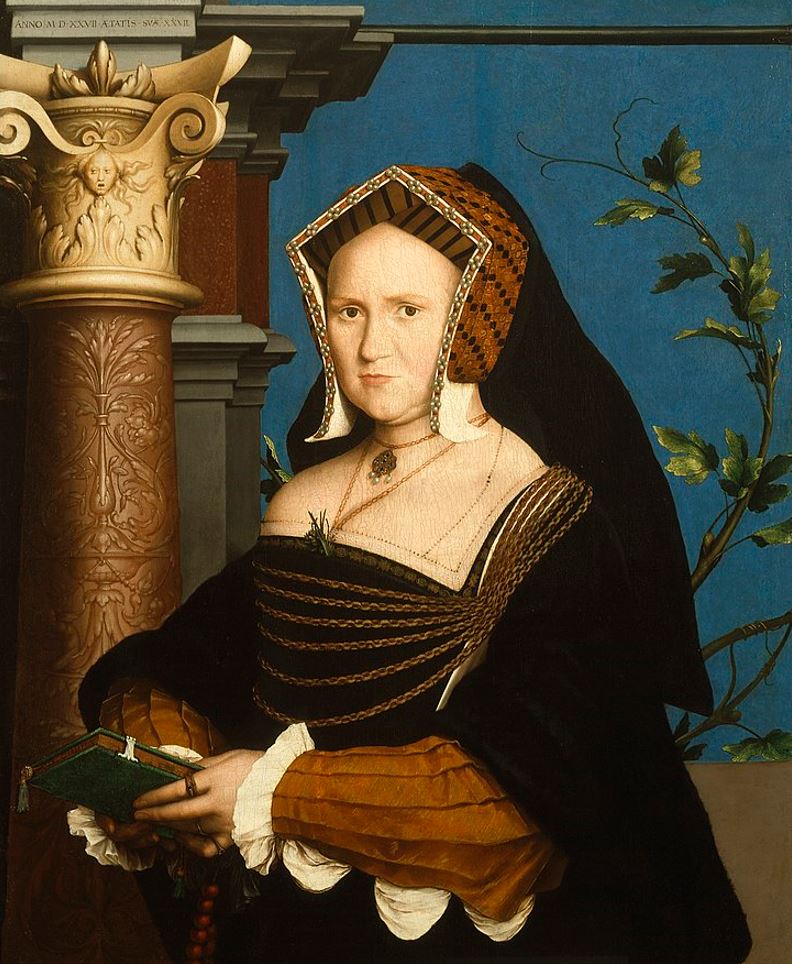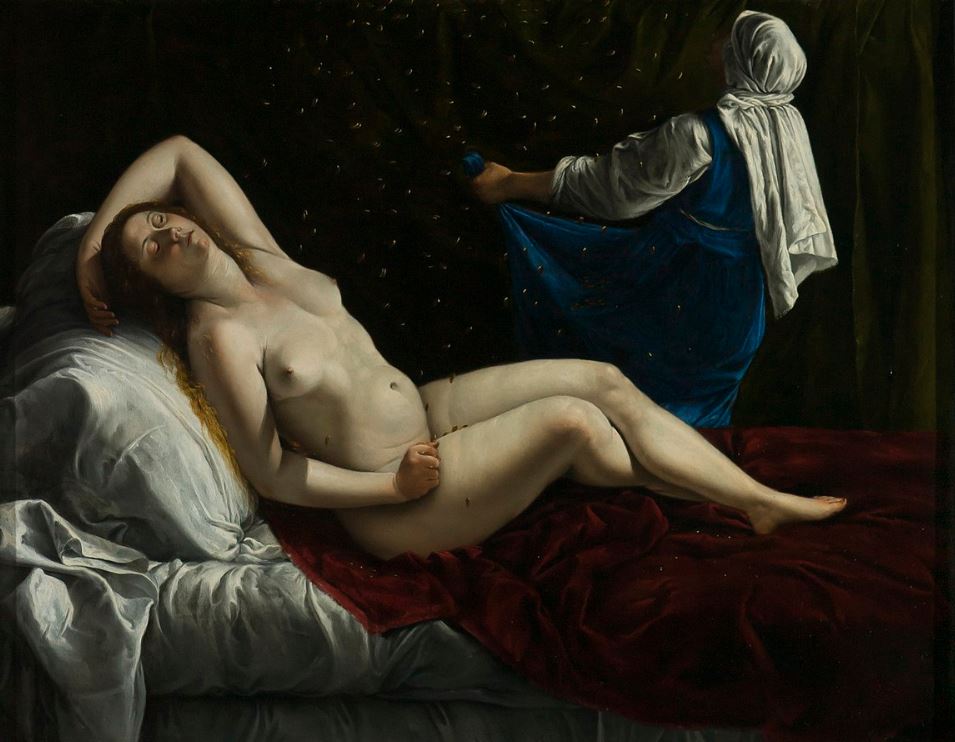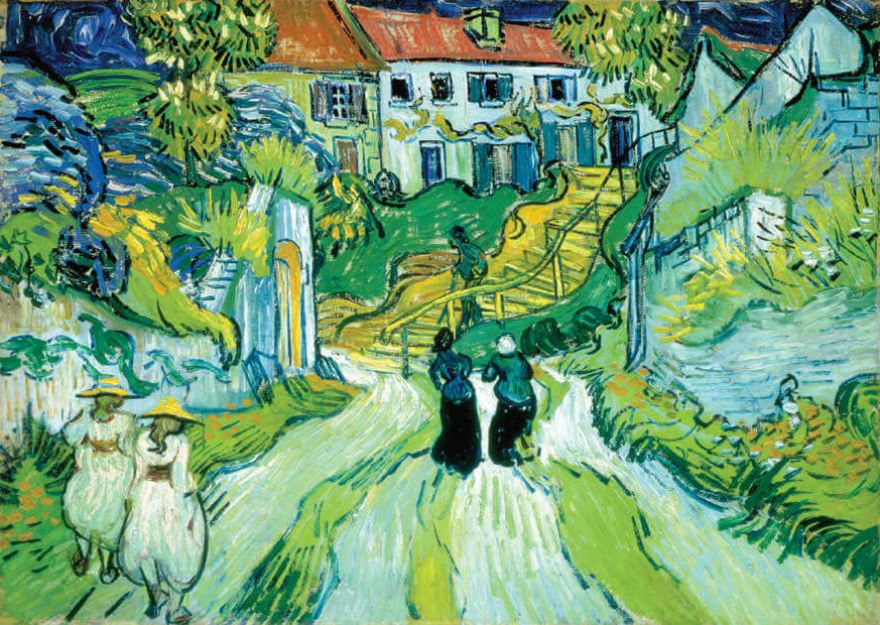The second-most populous city in Missouri is situated on the confluence of the Mississippi and Missouri Rivers and is home to one of the greatest art museums in the United States.
The Saint Louis Art Museum or “SLAM” has a history that goes back to 1879 when it was founded as the Saint Louis School and Museum of Fine Arts.
Back then, it was part of the Washington University in Saint Louis and was used as an educational facility that also houses a collection of fine art.
The museum moved to its current building in 1904, a majestic landmark in Saint Louis that was designed by renowned architect Cass Gilbert for the 1904 Louisiana Purchase Exposition.
Inspired by the enormous Baths of Caracalla in Rome, the structure has 3 floors and is situated in Forest Park, a huge public space that served as the venue of this event.
In this article, you’ll discover some of the highlights of the paintings collection of the Saint Louis Art Museum, an attraction that is free to visit.
1. Mary, Lady Guildford – Hans Holbein the Younger
- Date created: 1527
- Dimensions: 87 x 70.6 centimeters (34.2 x 27.7 inches)
Mary, Lady Guildford is a painting by Hans Holbein the Younger (1497-1543), a German-born Swiss artist who was one of the most prominent artists of the Northern Renaissance. The woman depicts the wife of Henry Guilford, one of the accountants of King Henri VIII of England.
The 27-year-old woman is holding a prayer book and stares at the viewer with a strong gaze. This was a typical look for women during the Renaissance era and was added to emphasize respectability. The artist filled the composition with a Renaissance-style pillar and grape leaves, a symbol of wealth.

2. Judgment of Paris – Lucas Cranach the Elder
- Date created: 1530
- Dimensions: 50.8 x 36.4 centimeters (20 x 14.3 inches)
Judgment of Paris is the title of a painting by Lucas Cranach the Elder (1472-1553), a German artist and another famous artist of the Northern Renaissance. It depicts a scene from Greek mythology in which the knight Paris is chosen to judge an Olympian beauty contest.
Juno watches the viewer on the far right while Minerva almost appears to be flirting. Venus is preoccupied with claiming the golden orb as the winner of the contest. The women were depicted according to the ideal of beauty during this period in history.

3. St. Paul – El Greco
- Date created: 1598-1600
- Dimensions: 69.9 x 55.9 centimeters (27.5 x 22 inches)
St. Paul is a painting by El Greco (1541-1614) which was part of a series of the Apostles of Jesus Christ. The is a half-length portrait of Saint Paul while he holds both a sword and a note in Greek letters, a reference to the Greek heritage of the Mannerist artist.
The note reads: “To Titus, ordained first Bishop of the Church of the Cretans.” This is a reference to Saint Titus, one of the first Christian missionaries. Saint Paul is credited with writing the “Epistle to Titus” which explains the duties of elders and bishops.

4. Danaë – Artemisia Gentileschi
- Date created: 1612
- Dimensions: 41.3 x 52.7 centimeters (16.2 x 20.7 inches)
Danaë is the title of a painting by Artemisia Gentileschi (1593-1656), one of the most renowned female artists of the Baroque era. She grew up when the infamous artist Caravaggio (1571-1610) was making a name for himself and her style was heavily influenced by the Italian painter.
The painting incorporates heavy use of chiaroscuro or the contrast between light and shadow to highlight the naked body of Danaë. The painting depicts a scene from Metamorphoses, the most famous work of the ancient Roman poet Ovid.

5. Thaddeus Burr – John Singleton Copley
- Date created: 1758-1760
- Dimensions: 129 x 101 centimeters (50.7 x 39.7 inches)
Thaddeus Burr is the title of a portrait painted by John Singleton Copley (1738-1815), an Anglo-American artist who painted prominent people of society in both America and England. Burr was one of the richest people in the New England community because his family owned a huge estate in Fairfield, Connecticut.
The export of crops made the family extremely wealthy and that’s why this painting depicts the man with a confident stare and wearing a blue satin waistcoat. Copley magnificently depicted this piece of clothing to emphasize the man’s social status.

6. The Verdict of the People – George Caleb Bingham
- Date created: 1854-1855
- Dimensions: 116.8 x 139.7 centimeters (46 x 55 inches)
The Verdict of the People is one of several paintings in the “Election Series” by American artist and politician George Caleb Bingham (1811-1879). The so-called “Missouri Artist” painted The Verdict of the People, the final work in this series, in the year 1854
What this scene exactly depicts has been debated by art historians but it’s generally agreed that it shows the victory of a pro-slavery candidate along with the people’s reaction. It’s a remarkable work of art that was painted in the decade before the outbreak of the American Civil War.

7. Stairway at Auvers – Vincent van Gogh
- Date created: May 1890
- Dimensions: 50 x 70.5 centimeters (19.6 x 27.7 inches)
Stairway at Auvers is a painting by Vincent van Gogh (1853-1890), the troubled Dutch artist who took his own life just a few months after he completed this mesmerizing work of art. It’s a very characteristic painting from the final period of the artist’s career.
Swirling lines, bright colors, and a dense composition almost transform this painting into a vibrating artwork. It depicts a scene in the rural town of Auvers-Sur-Oise just outside of Paris where he spent the final months of his life.

8. Bathers – Paul Cézanne
- Date created: 1890-1892
- Dimensions: 54.3 x 66 centimeters (21.3 x 25.9 inches)
Bathers is a distinctive work of art by Paul Cézanne (1839-1906), the French artist who revolutionized the world of art in the late 19th and early 20th century. His paintings are considered to be precursors to several modern art movements, especially Cubism.
It features his easily-recognizable short brushstrokes that reduce figures and elements to their simplest forms. In this case, we can see a group of nude male bathers, probably in the Provence in Southern France. The peak of Mont Sainte-Victoire is looming in the distance.

9. The Louvre, Morning, Sunlight – Camille Pissarro
- Date created: 1901
- Dimensions: 73.7 x 92.7 centimeters (29 x 36.5 inches)
The Louvre, Morning, Sunlight is a painting by Camille Pissarro (1830-1903), a Danish-French artist who was one of the most notable members of the Impressionists. It was produced during the final years of his life at a time when his eyesight was failing him.
He was forced to paint the views out of the hotel bedroom windows that he rented in major French cities, including Paris. This work depicts the view of the Louvre Museum in the early morning as seen from the opposite bank of the Seine River. The warm colors presume this would have been a lovely day.

10. Water Lilies – Claude Monet
- Date created: 1915-1926
- Dimensions: 200 × 426.1 centimeters (78.75 x 165.75 inches)
Water Lilies is the title of an extensive series of paintings by Claude Monet (1840-1926), a man often described as the founding father of the Impressionist movement. As the name suggests, these 250 Impressionist paintings depict water lilies in a pond.
Claude Monet painted these works in the garden of his own house in Giverny, a small town in Northern France where he lived and worked during the final decades of his life. He cultivated his amazing garden and painted it as a hobby. What a lovely way to spend your old days, don’t you think?



